

The New Moon (1919) Norma Talmadge Film Corporation/Select Pictures Corporation. Produced by Joseph M. Schenck. Directed by Chester Withey. Assistant director, Harry Sothern. Scenario by Chester Withey. Story by H. H. Van Loan. Camera by David Abel. Art direction by Victor De Linsky. Cast: Norma Talmadge, Pedro de Cordoba, Charles Gerard, Stuart Holmes, Marc McDermott, Ethel Kaye, Harry Sothern, Marguerite Clayton. 6 reels. Fimed in Saranac Lake, New York. A copy of this film is available at the Library of Congress (5 reel copy, 35 mm., some deterioration)
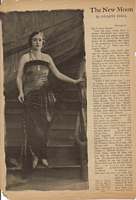 |
 |
 |
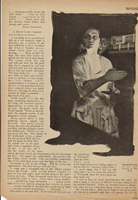 |
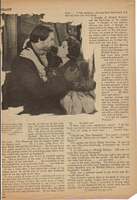 |
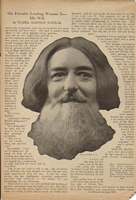 |
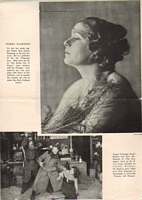 |
. |
| Princess Maria Pavlovna, later known as Sonia Sazonoff | Norma Talmadge |
| Prince Michail Koloyar | Pedro de Cordoba |
| Theo Kameneff | Charles Gerard |
| Orel Kosloff | Stuart Holmes |
| Vasili Lazoff | Marc McDermott |
| Masha Lazoff | Ethel Kay |
| Leo Pushkin | Harry Southern |
| Nadia Kameneff | Marguerite Clayton |
A real old-fashioned meller, of the up-raising of the Bolshiviki and the reign of terrorism inaugurated by the Reds in Russia form the basis of "The New Moon" in which Norma Talmadge is presented by Joseph M. Schenck. The story was written by H.H. VanLoan. Although Miss Talmadge looks wonderful as a Russian Princess and does some very remarkable work in the role of the story, it is hardly the type one would expect to see her in. It is so cheaply melodramatic that it smacks rather of the Eighth avenue type than Broadway.
The scenario and direction were entrusted to Chester Withey, who it is easily observed tried hard to put the picture over with the aid of several very well staged mob scenes and some excellent snow scenes. In the titling there is much noticeable evidently intended to uplift the production. But as the "class" was not present in the original it was a difficult task to help it out with the aid of titles.
The big punch is the edict issued by the Soviet nationalizing all the women of Russia between 17 and 32. Around this are built situations at once thrilling and full of melodramatic action.
The story opens, after a few preliminary shots to plant the character of the Princess, at the ball given in honor of her engagement to Prince Michail Koloyar. In the midst of the gaiety the Reds break in to ruthlessly kill and plunder. The Prince battles off several and arranges the escape of his betrothed. The action following is the adventures befalling both, he with the Reds through whom he hopes to find trace of her, and she, in a small Russian village, where she is the shopkeeper. Finally the two make their escape across the border, after a couple of villains in the piece have been successfully slain.
The mob scenes are very well staged, the lighter touches well handled and the lightings and photography exquisite. Mr. Withey has employed a hazy fade out that is most effective.
The cast supporting Miss Talmadge is headed by Pedro de Cordoba as leading man, who, while he does not exactly measure up to the popular ideal of what the picture leading man should be, does give a corking performance. Charles Gerard and Stuart Holmes play heavy roles, putting them over most satisfactory. Marc McDermott, Ethel Kaye, and Harry Southern as peasants landed, while Marguerite Clayton as the sister of the head of the Reds gave an adequate interpretation of a minor part.
From a story standpoint "The New Moon" is lacking in class, but the subject does hold an idea that is timely and has advertising possibilities for the exhibitor.
The photoplay at the Rivoli is "The New Moon," a picture in which Norma Talmadge, Pedro de Cordoba, Charles Gerard, and others, as actors, and Chester Withey, as director, waste their undoubted talents on a Russian story dramatically overdone and misrepresentative of fact.
Good morning; have you written your Bolshevist story yet? H.H. Van Loan has written his, and here it is. It is the sort of story that you always find the literarily ambitious Dubuque young lady writing about New York; that is to say, she doesn't know a blamed thing about New York except what she has read in the papers and periodicals. And while I am wholly ignorant of Mr. Van Loan's real and first-hand knowledge of Russia, his atmosphere and phraseology sound like studious cramming out of the Saturday Evening Post, the Literary Digest and the morning front pages, rather than resembling a personal reflection. Granting that you don't care whether your foreign pieces are authoritative documents or mere exciting imaginations, this story--with the usual exhibitions of Bolshevik indolence, lust, cruelty and impracticality,--should really please you, for it is indeed splendidly put on, and Director Chet Withey has secured some very genuine Slavic atmosphere, especially in the great hall and court of the palace of the Pavlovnas. His use of a small model of the village, however, seemed unnecessary because of its very evident unreality--contrasting so sharply with his other real and painstaking detail. Norma Talmadge plays Princess Marie Pavlovna, lending the character all her swiftness, her subtlety, her girlish beauty and her lightning-like capacity for change of expression. Excellent in her support are Pedro de Cordoba, Charles Gerard, Stuart Holmes, Marc McDermott, and Marguerite Clayton.
"The New Moon"
A Select Production of Powerful Contrasts in the Red Rule of Russia, Presenting Norma Talmadge At Her Best
Reviewed by Louis Reeves Harrison
POWERFUL, vivid and terrible in its effects, "The New Moon" bares much that is sensual and unscrupulous in Russia's red enormities committed under the name of government at the same time holding attention closely through swift dramatic action wonderfully well visualized by producer Joseph M. Schenck, Norma Talmadge, and a brilliant cast.
The power of this Select Production comes very largely from the vitality of its theme and from the dramatic opportunities afforded by actual mandates issued in Russia. The structure of the story is good, and its treatment impressively realistic. When is added a cast of exceptionally high order, the values of "The New Moon" are many and strong. The performance of Norma Talmadge shows that she is constanatly improvingas an artist. She keeps her youth and beauty while gaining in spiritual charm and in more subtle revelation of mind and feeling. Pedro Cordova as Michail dignifies and elevates every moment of his impersonation, as does Marc MacDermott as the intense Lazoff. No less skilled are the characterizations of cunning Kameneff by Charles Gerard, and brutal Kosloff by Stuart Holmes.
[Omitted, photo of Talmadge shielding a candle, with the cut line: Norma Talmadage makes us glad she doesn't rely solely on moonlight in "The New Moon."]
The Story.
It is under then New Moon that Princess Marie Pavlovna plights her troth to Prince Michail at a grand ball in her honor, though the Reds of Saranoff are gathering under Kameneff, a pretended anarchist, really in the pay of a foreign government to ruin Russia. Marie is democratic in a sweet way to the peasants, loved by many of them, but Anarchist mob, led by brutal Kosloff, a tool of Kameneff, invates the palace on the night of the ball, where Kameneff has gone as an uninvited guist, and a scene of murder and pillage follows. Michail makes one gallant fight after another to save Marie, and finally succeeds in sending her away in a carriage, though he loses track of her in his own escape. He subsequently searches for her in the guise of a peasant courier with access to military centres. She does not leave the province of Saranoff, but hides in the village of Volsk, where she purchases a grocery store with her jewels.
At her store Marie is accidentally recognized by unscrupulous Kamenff, now in love with her, though she does not know him. He issues a mandate that all females between 17 and 32 must register, and Marie does so under her assumed name, supposing it is for good work. The women are undeceived when they find a second mandate makes them national property at the disposal of men. They appeal to Marie at a moment when Kameneff is within hearing. She says she will appeal to Kameneff. Once she is alone he reveals his identity and offers to revoke the order if she will live under his protection, only to be denied with spirit. There is now an orgy of brutality. Kosloff ruins the daughter of Lazoff, the potter, and Lazoff becomes an instrument of vengeance when joined by Michail, who has been told that Marie is the mistress of Kameneff. He reads her innocence in her eyes, and goesto her rescue when she is arrested and taken to Kameneff's headquarters. Lazoff chokes brutal Kosloff, and his hand aims the pistol that kills Kameneff, the latter having executed a group of women, his own sister in the number. Michail and Marie escape at lst, to enjoy new freedom and true happiness, though betrothed under the unlucky full moon. [sic, nobody seems to be able to get their astronomy right]
Cast.
| Princess Maria Pavlovna, later known as Sonia Sazonoff | Norma Talmadge |
| Prince Michail Koloyar | Pedro de Cordoba |
| Theo Kameneff | Charles Gerard |
| Orel Kosloff | Stuart Holmes |
| Vasili Lazoff | Marc MacDermott |
| Masha Lazoff | Ethel Kay |
| Leo Pushkin | Harry Southern |
| Nadia Kameneff | Marguerite Clayton |
Story by H.H. Van Loan
Scenario by Chester Withey.
Directed by Chester Withey
Advertising Angles. Make all the use you can of Miss Talmadge's name. Play up the story as the first romantic play dealing with the new Russia and its ghastly evils. Use the line "Not a war story, but a story of Russia after the war," to carry home the fact that this is not a left over from pre-armistice days.
Program and Advertising Phrases: Powerful and Vivid Story of Russia Under "Red" Rule
Impressively Realistic Drama Based on Vital Theme of Russian Problem of Today
Norma Talmadge Star of Intensely Dramatic Story Dealing With the Experience of a Democratic Russian Princess Under the Bolshevist Regime
Advertising Aids: Two one-sheets, two three-sheets, one six-sheet, one 24-sheet. Window cards, 14x21. Heralds. Lobby display photographs, 8x10, 11x14, 22x28. Slides. Cuts, two one-column, two two-column, one three-column, one one-half column cut of star and one one-column and one two-column cuts of star.
New Moon is of considerable historical interest as one of the hysterical rash of anti-Bolshevik propaganda which came out after the Russian Revolution. Even in its own day, it was recognized as ludicrously overdone. In its most lurid scene, Talmadge locks the dictator's sister in a room to keep her away from one of his lustful henchmen. He tries to break open the door with an ax, and Talmadge grabs a large whip and beats him. He throws the ax, missing her face by inches. He then wrestles her to the floor before being driven off by the ax-wielding father of a raped peasant woman. According to contemporary reviews, the dictator declares all women to be state property, but the existing print must be a later reissue, since instead he merely orders that no one leave the province without permission. It's probable that other particularly sensational titles were changed, and a long explanatory title added comparing the Bolsheviks to carpetbaggers. If taken in the right spirit, however, the film is very entertaining, and Talmadge gives a spirited performance. Despite the title, all of this action takes place under a large crescent moon.
Print viewed: 35 mm. at Library of Congress
Last revised, October 13, 2010